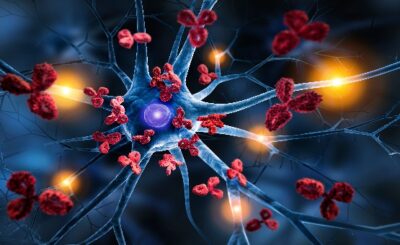Health Matters
Over the past 15 years, researchers have identified hundreds of regions in the human genome associated with heart attack risk. However, researchers lack efficient ways to explore how these genetic variants are molecularly connected to cardiovascular disease, limiting efforts to develop therapeutics.
To streamline analysis of hundreds of genetic variants associated with coronary artery disease (CAD), a team of researchers led by investigators from Brigham and Women’s Hospital, a founding member of the Mass General Brigham healthcare system, in collaboration with the Broad Institute of MIT and Harvard and Stanford Medicine, combined multiple sequencing and experimental techniques to map the relationship between known CAD variants and the biological pathways they impact.
In a study, the researchers applied this technique to endothelial cells, which line blood vessels. The team found that a key biological mechanism involved in a rare vascular disease may influence CAD risk.
“Studying how hundreds of regions of the genome, individually or in groups, influence risk of heart attack can be a painstaking process,” said corresponding author Rajat Gupta, MD, of the Divisions of Genetics and Cardiovascular Medicine at Brigham and Women’s Hospital.
“We decided we needed to have better maps showing how genetic variants affect gene expression and how genes affect biological function. If we could combine those two kinds of maps, we could make the bigger connection from variant to biological function.”
The mapping technique developed by the researchers is called the Variant-to-Gene-to-Program (V2G2P) approach.
First, in collaboration with researchers at Stanford Medicine, the researchers matched CAD loci previously identified through genome-wide association studies to genes impacted by these genetic variants.
Then, they used CRISPRi-Perturb-seq, a technology developed at the Broad Institute of MIT and Harvard, to “delete” thousands of CAD-associated genes, one at a time, and to examine how each deletion impacted the expression of all the other genes in that cell.
In total, the researchers sequenced 215,000 endothelial cells to determine how 2,300 “deletions” influenced expression of 20,000 other genes in each cell.
With applied machine learning algorithms, they were able to identify the biological mechanisms that consistently appeared to be related to CAD-associated variants.
In particular, the researchers found that 43 of 306 of the CAD-associated variants in endothelial cells were linked to genes in the cerebral cavernous malformations (CCM) signaling pathway.
CCM is a rare, devasting vascular disease that impacts the brain, but the researchers hypothesized that smaller, subtler mutations in the genes involved in CCM may contribute to CAD risk by affecting vascular inflammation, thrombosis, and the structural integrity of the endothelium.
Moreover, the researchers highlighted a previously unrecognised role for the TLNRD1 gene in regulating the CCM pathway alongside other known CCM regulators and hypothesized that TLNRD1 may be involved in both CAD, a common disease, and CCM, a rare one.
Going forward, the researchers hope to study patients with endothelial CAD-associated variants as well as CCM patients to determine whether there are distinct opportunities for treating these populations.
For the latter, the researchers are interested in determining whether further investigation into TLNRD1 can lead to better forms of genetic testing and risk stratification.
This study focused on endothelial cells, which line blood vessels and are increasingly understood to influence CAD risk.








